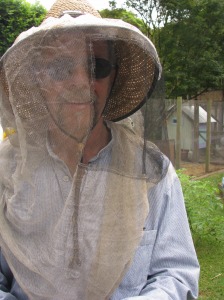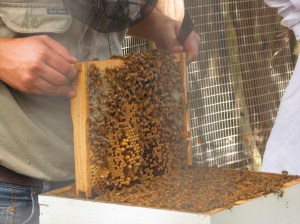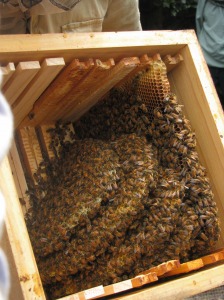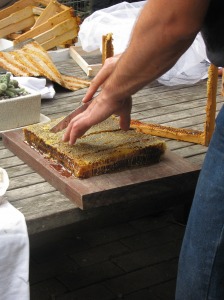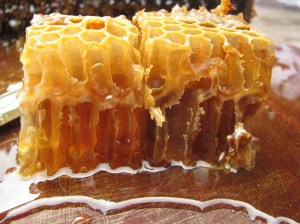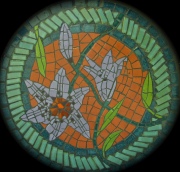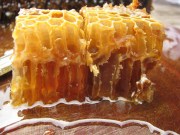I can’t wait till Spring! I know I know, it’s still Summer but Spring is when we’ll be getting our very first beehive! We’re completely hooked on the idea of adding bees to our Permaculture garden after another extraordinary weekend learning all about natural beekeeping with Tim Malfroy.
Unlike Tim who at a very young age was encouraged to participate in his Dad’s backyard beekeeping activities, my experience was the opposite and my memories of Dad disappearing into the backyard dressed up like an alien with smoker in hand are shrouded in mystery and fear. I think the problem started with Mum locking us in the house whenever Dad visited his Langstroth hive so I guess it’s no wonder I grew up thinking that the whole beekeeping thing was a little on the scary side.
I can now advise that having attended a natural bee keeping course my fears have finally been put to bed and strangely, I can’t wait to get a hive of my very own.
I’ll be honest, before the course I knew very little about beekeeping but I came away a changed person, inspite of discovering that all these years I’ve actually been eating bee vomit! Apart from that bit I now have the greatest respect for bees who not only provide us with the miracle product of honey but also pollinate our gardens for free. I now also realise that the price we pay for honey is ridiculously cheap and in no way reflects the true value of the work, hours and bee food miles involved in making this amazingly complex whole food.
There are several types of popular hives but our course mainly
focused on the use of the Warré beehive because it supports
sustainable and natural beekeeping practices which align with
our Permaculture lifestyle. 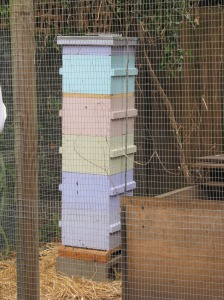 The
Warré hive was originally invented by the Frenchman, Émil
Warré who studied hundreds of hives to determine the most bee
friendly design. This type of hive is a modular system made with a
series of vertically stacked boxes and as the colony expands, new boxes
can be positioned or ‘nadired’ underneath the existing ones. It uses top
bars for comb support instead of frames and when it’s
time for honey and comb removal, the top honey laden chamber
can be isolated from the brood which means there is ultimately less
distrubance to the hive. These are very attractive
features for beginners like me and it’s no wonder Émil
Warré called it the ‘People’s Hive’.
The
Warré hive was originally invented by the Frenchman, Émil
Warré who studied hundreds of hives to determine the most bee
friendly design. This type of hive is a modular system made with a
series of vertically stacked boxes and as the colony expands, new boxes
can be positioned or ‘nadired’ underneath the existing ones. It uses top
bars for comb support instead of frames and when it’s
time for honey and comb removal, the top honey laden chamber
can be isolated from the brood which means there is ultimately less
distrubance to the hive. These are very attractive
features for beginners like me and it’s no wonder Émil
Warré called it the ‘People’s Hive’.
Natural beekeeping aims to put the needs of the bees before
those of the beekeeper. It allows bees to make their own comb, a
natural process that has been removed from most commercial
beehives. 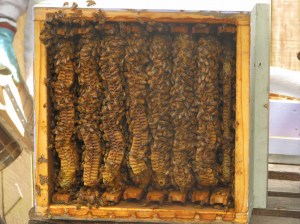 Rapid
comb renewal is excellent for disease management because it
prevents a build up of chemical residue that bees may have inadvertently
collected from the environment. Bees are allowed to winter on
their own honey rather than being artifically fed by the beekeeper and
there are absolutely no chemicals or pesticides used and no paints,
glues or synthetic materials used within the hive.
Rapid
comb renewal is excellent for disease management because it
prevents a build up of chemical residue that bees may have inadvertently
collected from the environment. Bees are allowed to winter on
their own honey rather than being artifically fed by the beekeeper and
there are absolutely no chemicals or pesticides used and no paints,
glues or synthetic materials used within the hive.
The size of the colony will depend on the availability of nectar and pollen in the area but as Sydney is surrounded by large expanses of flowering eucalypts it is likely that backyard beehives will be very productive. In natural bee keeping, the colony size is allowed to expand and contract as dictated by the bees and governed by the surrounding environment and availability of food. You could expect a very productive hive to house up to 100,000 bees and produce up to 60 kilos of honey each year, which is more than adequate for a backyard operation.
On day two, we got to see a Warré beehive in full operation in a small suburban backyard. 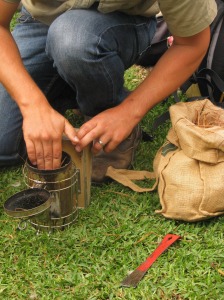 While
the owner distracted the bees with a puff or two from the
smoker Tim confidently opened the hive to reveal about 60,000 bees
busy at work. It was a truly awesome sight with the colourful layers of
perfectly shaped comb, rich golden honey and brood smothered in the
velvety mass of bees centralised around the queen.
While
the owner distracted the bees with a puff or two from the
smoker Tim confidently opened the hive to reveal about 60,000 bees
busy at work. It was a truly awesome sight with the colourful layers of
perfectly shaped comb, rich golden honey and brood smothered in the
velvety mass of bees centralised around the queen.
We could see the collector bees bringing pollen back to the hive and were told how they carry it back to the hive in their stomachs then pass it on to worker bees who then digest it to break down the sugars to produce raw honey. Dry honeycomb cells are filled with the raw honey and then the cells are capped with heated wax exuded from their bodies. Bees fan their wings, working co-operatively en masse to maintain a core hive temperature of 35°C and they are known to travel up to 16kms in search of nectar and pollen. We saw some bees doing the ‘bee dance’ which they use as a form of communication to tell each other how far and in which direction the nectar or pollen source is from the hive. I learnt that bees provide us with food security through their pollination services and a range of bee diseases, some of which aren’t yet in Australia, are a genuine threat to our agricultural industry.
Lucky for us we got to taste what we unanimously agreed was the best honey we’d ever eaten, straight from the comb. It was simply amazing.
A few days ago the mystery surrounding bees and beehives was finally put to rest. We learnt so much and can hardly wait to get up close and personal with these fascinating creatures. Sure, there’s bound to be a sting here and there, but as a reward for our courage and careful beehive management, we hope they’ll provide us with a very generous supply of healthy natural honey and a much better crop of pumpkins and cucumbers next year.
Stay tuned for my next update on….a snapshot of what we’ve done so far this year.

